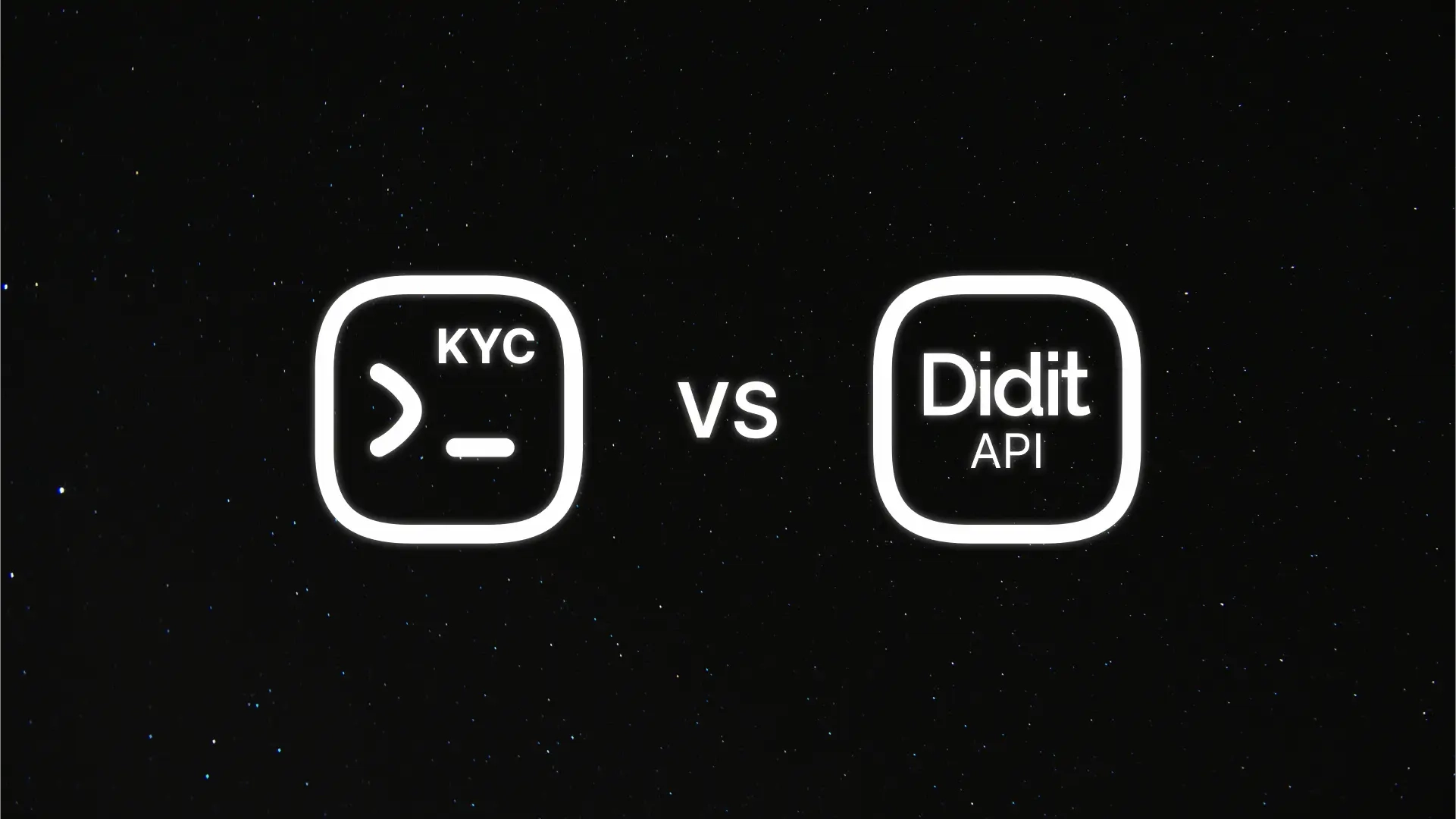
Build Your Own KYC or Use an API? Save Time and Money with a Free KYC API
Key takeaways (TL;DR):
Building KYC in-house means months of development, high cost, and ongoing regulatory risk.
Integrating a free KYC API gets you to production in hours with predictable costs.
Friction-lite flows boost conversion and reduce onboarding drop-off.
A modular KYC ensures global compliance and the flexibility to scale when you need it.
If you’re weighing building your own identity verification, you probably have a hard-requirements checklist already—things like document checks, biometrics, business logic, metrics, webhooks… The challenge is to build it and, more importantly, keep it current. Regulations evolve nonstop (GDPR, AMLD6, eIDAS 2.0, FATF guidance), fraud keeps changing (deepfakes, synthetic identities), and users expect onboarding in seconds. Meanwhile, the business demands time to market and healthy unit economics.
This article answers the big questions: it compares the real build vs. buy costs, shares stats, and explains when a free KYC API like Didit helps you ship to production in under 24 hours. The quick verdict: if you want speed, customization, and predictable costs, integrating (API or No-Code) is the most efficient route in nine out of ten cases.
Why KYC Friction Kills Conversion (and LTV)
A long or confusing onboarding flow spikes abandonment. Some sources place friction-driven drop-offs at 60–70% in fintech and crypto. In Europe, “up to 63% of users” abandon an onboarding that feels too long, while other sources say only 15–35% complete initial onboarding.
The takeaway is clear: too much friction kills conversion and LTV—and the upside for improvement is huge.
Compliance costs also keep climbing. In the U.S. and Canada alone, the annual bill to combat financial crime reached USD 61B (2024), with nearly all institutions reporting rising costs. Reducing friction with modern, automated flows directly impacts cost and risk, beyond just user experience.
Build vs. Integrate: A Strategic Comparison
When teams evaluate KYC, they typically look at price per verification and integration effort. Those matter, but so do time to market, opportunity cost, regulatory risk, maintainability, and user friction. If any of those spike, the TCO of “build” quickly outgrows “buy.”
So what are we comparing? The difference between developing a solution from scratch or integrating a production-ready technology (via API or No-Code).
Bottom line: building an in-house KYC/AML can push costs up to $80,000/month, per some sources. If your goal is to ship value now, the balance tilts toward integrating a free KYC API and scaling with modules as data justifies it (with fully transparent pricing).
The “Must-Haves” for Modern KYC (and Why They Matter)
Modern identity verification platforms need robust anti-fraud tooling and great UX. Manual processes no longer cut it. These are the “minimums” any KYC should deliver:
- Document Verification (ID Verification). It’s not just reading the ID—it’s capturing it well and interpreting it correctly. The tech should guide capture, detect document type and issuing country, and use high-accuracy OCR, MRZ, and code checks to cross-validate visual zones—plus authenticity checks to catch fakes, photos, and screenshots.
- 1:1 Face Match. Confirms in real time that the person verifying is the one on the ID, using similarity scores and configurable thresholds so you can dial sensitivity for the right security-conversion balance.
- Passive Liveness. With deepfakes rising, passive liveness proves real presence without unnecessary friction. Unlike active checks, it detects presentation attacks (photos, videos, screen replays) without dragging down UX.
- Additional risk signals. Biometrics don’t see the network—IP signals do. By cross-checking IP and geolocation, you learn where the user is, spot VPNs, and catch mismatches between document country, IP, and geolocation. Simple checks that add invisible security.
Automating your KYC process is key. With these four layers, the winning pattern is clear: roughly 90% of decisions happen in real time, while manual review is reserved for gray areas or edge cases.
Ship Fast: From Zero to Production with a Free KYC API
Need speed? The shortest path is No-Code Workflows, which let you validate your flow in minutes. If you want deeper control, the API gives you the flexibility to customize every detail. Here’s how to integrate an identity verification API in a single day.
There are several options on the market, but only one offers an unlimited free KYC plan: Didit. Whether you use No-Code Workflows or the API, you can verify your users at no cost. If your business needs higher assurance or enhanced due diligence, enable modules like AML Screening, Proof of Address, or Age Estimation as needed. In any case, these features will cost up to 70% less than traditional platforms—and far less than building from scratch.
Metrics That Matter to Both Engineering and the Business
- Conversion rates (by step)
- Drop-off rates (by step)
- Verification speed
- Module latencies (especially for APIs)
- False-positive/false-negative rates
- Acceptance rates
- Ticket volume
- Manual review percentage
Conclusion: Save Time and Money Today, Keep Flexibility for Tomorrow
For most startups and scaleups, the tradeoff between building a bespoke identity verification system and integrating an API (especially a free one like Didit) tilts strongly toward the latter. You’ll launch in hours, tailor only the features you need, and deliver a smooth, low-friction experience.
If you need even more speed, verification links (No-Code) are worth considering: you can go to production in minutes with virtually no technical overhead.
Over 3,500 companies worldwide already use our technology. Want proof? Explore our success stories, or dive right into our technical docs.
Build Your Own KYC or Use an API? Save Time and Money with a Free KYC API
